Search
Search Results
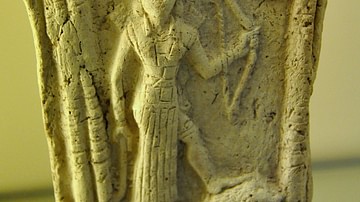
Definition
Ishtar
Ishtar (Inanna in Sumerian sources) is a primary Mesopotamian goddess closely associated with love and war. This powerful Mesopotamian goddess is the first known deity for which we have written evidence. While largely unknown in the modern...
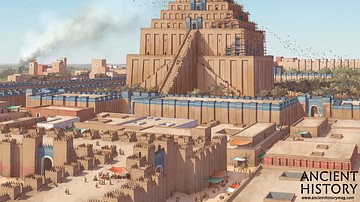
Collection
Mesopotamia: Government & Religion
The polytheistic religion of ancient Mesopotamia was instrumental in shaping its government and held great significance in the lives of its people. Mesopotamian religion revolved around the belief that humans were created to work alongside...
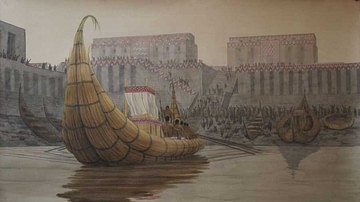
Definition
Eridu
Eridu (present day Abu Shahrein, Iraq) was considered the first city in the world by the ancient Sumerians and is among the most ancient of the ruins from Mesopotamia. Founded in c. 5400 BCE, Eridu was thought to have been created by the...
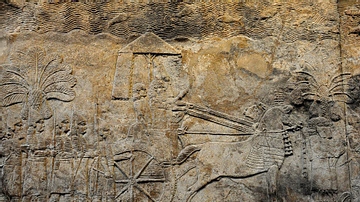
Image
Assyrian Military Campaign in Southern Mesopotamia
The Assyrian king in a chariot watches as prisoners are brought in and heads and booty are piled-up in a palm grove. Neo-Assyrian era, 640-620 BCE, Mesopotamia, Iraq. From Nineveh, south-west palace, court XIX, panels 10-12. (The British...
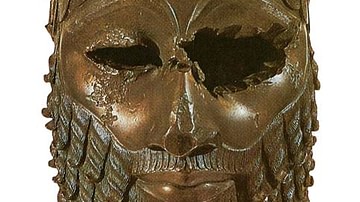
Definition
Sargon of Akkad
Sargon of Akkad (r. 2334 - 2279 BCE) was the king of the Akkadian Empire of Mesopotamia, the first multi-national empire in history, who united the disparate kingdoms of the region under a central authority. He is equally famous today as...
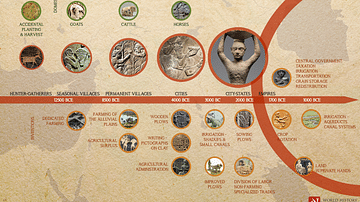
Collection
Mesopotamia: Agriculture & Innovations
Ancient Mesopotamia, located in the Fertile Crescent between the Tigris and Euphrates rivers, witnessed the emergence of cities and empires primarily due to the vital role of agriculture. The rich alluvial soil and access to water sources...
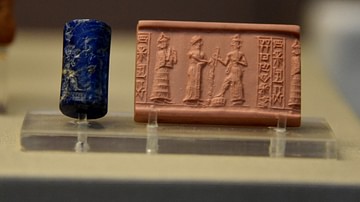
Article
Mesopotamian Inventions
Mesopotamian inventions include many items taken for granted today, most of which were created during the Early Dynastic Period (2900-2334 BCE) or developed from achievements of the Uruk Period (4100-2900 BCE). The Sumerians are credited...
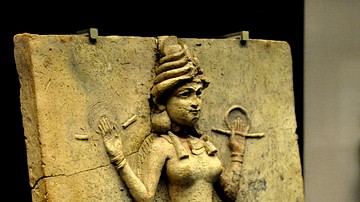
Image
Queen of the Night or Burney's Relief, Mesopotamia
The figure could be an aspect of the goddess Ishtar, the Mesopotamian goddess of sexual love and war, or Ishtar's sister and rival, the goddess Ereshkigal who ruled over the Underworld, or the demoness Lilitu, known in the Bible as Lilith...
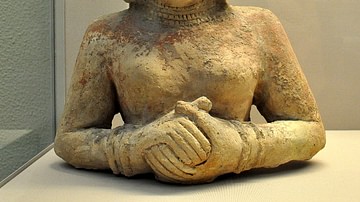
Image
Female Worshipper Statue, Mesopotamia
Only the upper half of this clay statue of a naked woman has survived. It represent a worshipper. Traces of red color (original paint) can still be seen. She has an elaborate hair style and wears a 4-strand necklace and broad bracelets. Date...
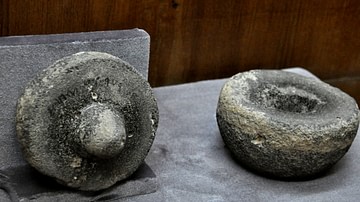
Definition
Mesopotamian Science and Technology
Mesopotamian science and technology developed during the Uruk Period (4100-2900 BCE) and Early Dynastic Period (2900-1750 BCE) of the Sumerian culture of southern Mesopotamia. The foundation of future Mesopotamian advances in scientific/technological...